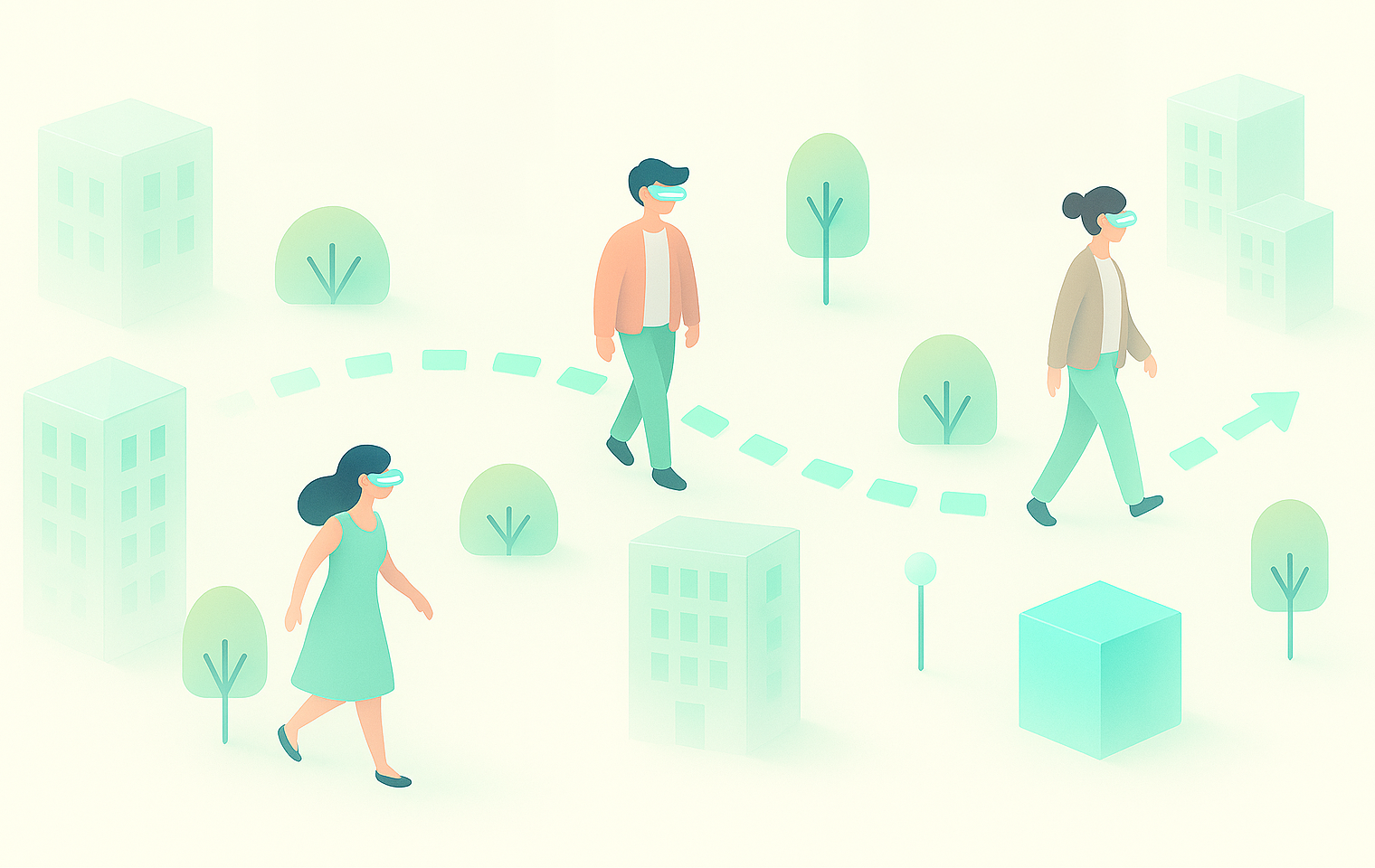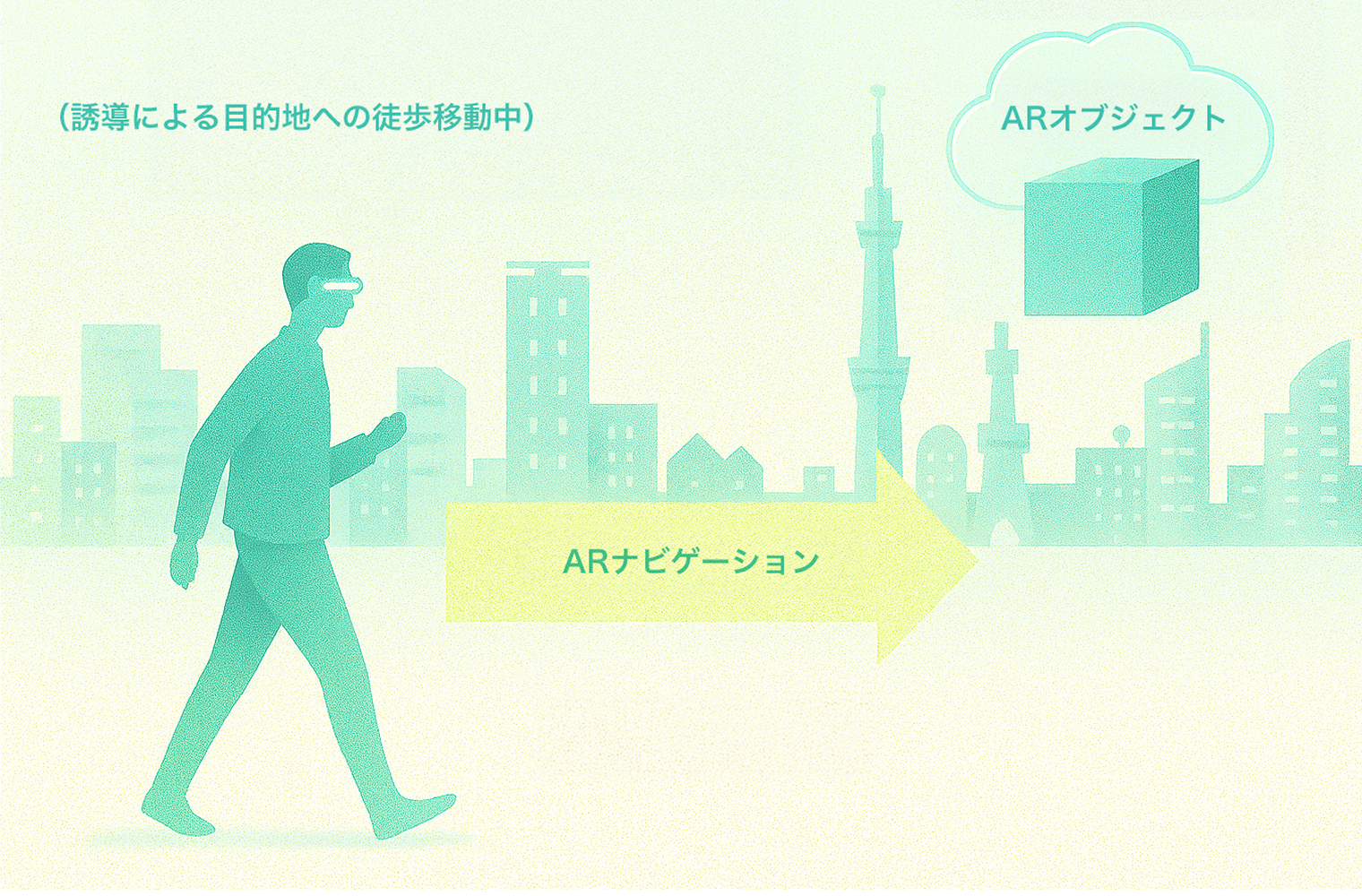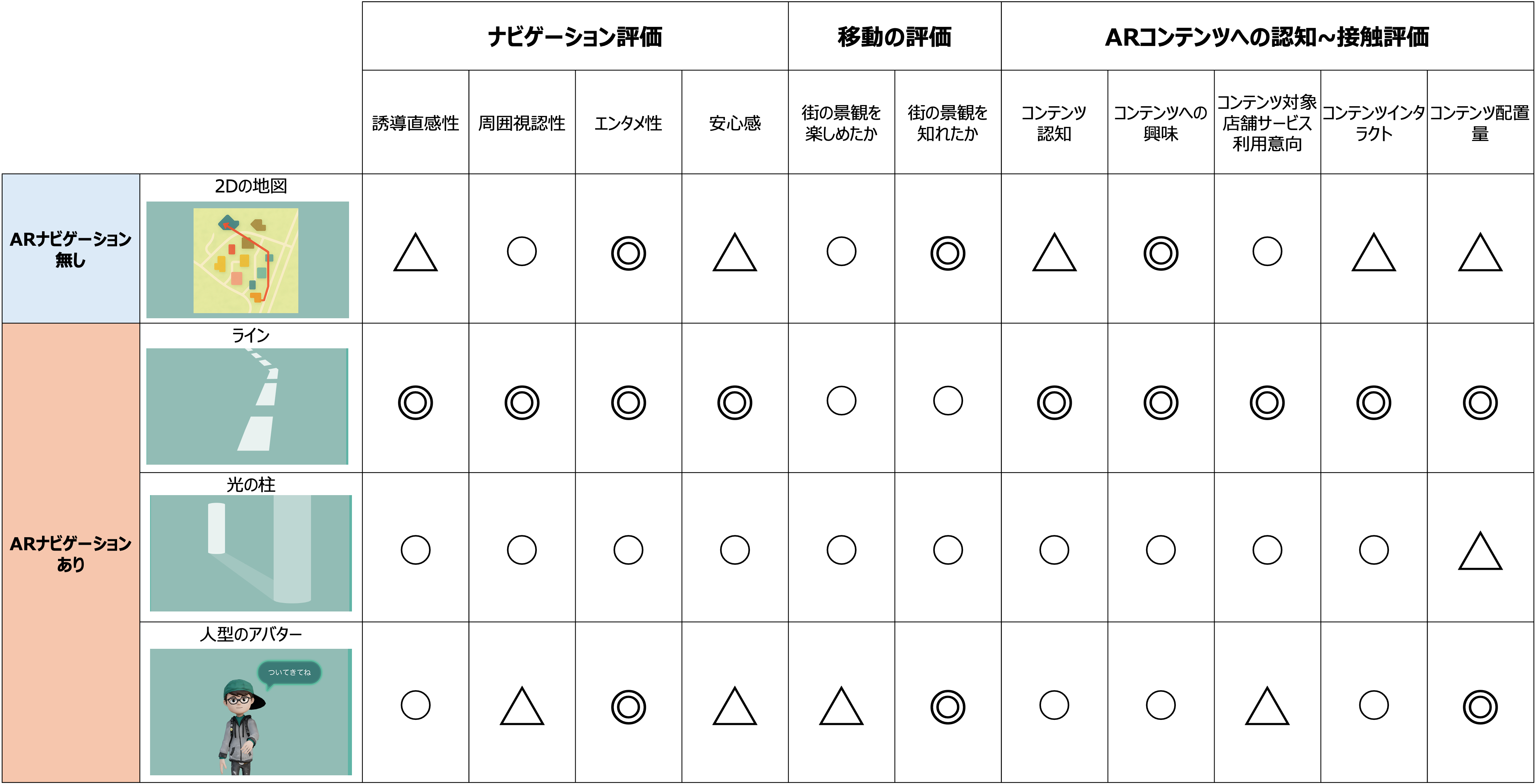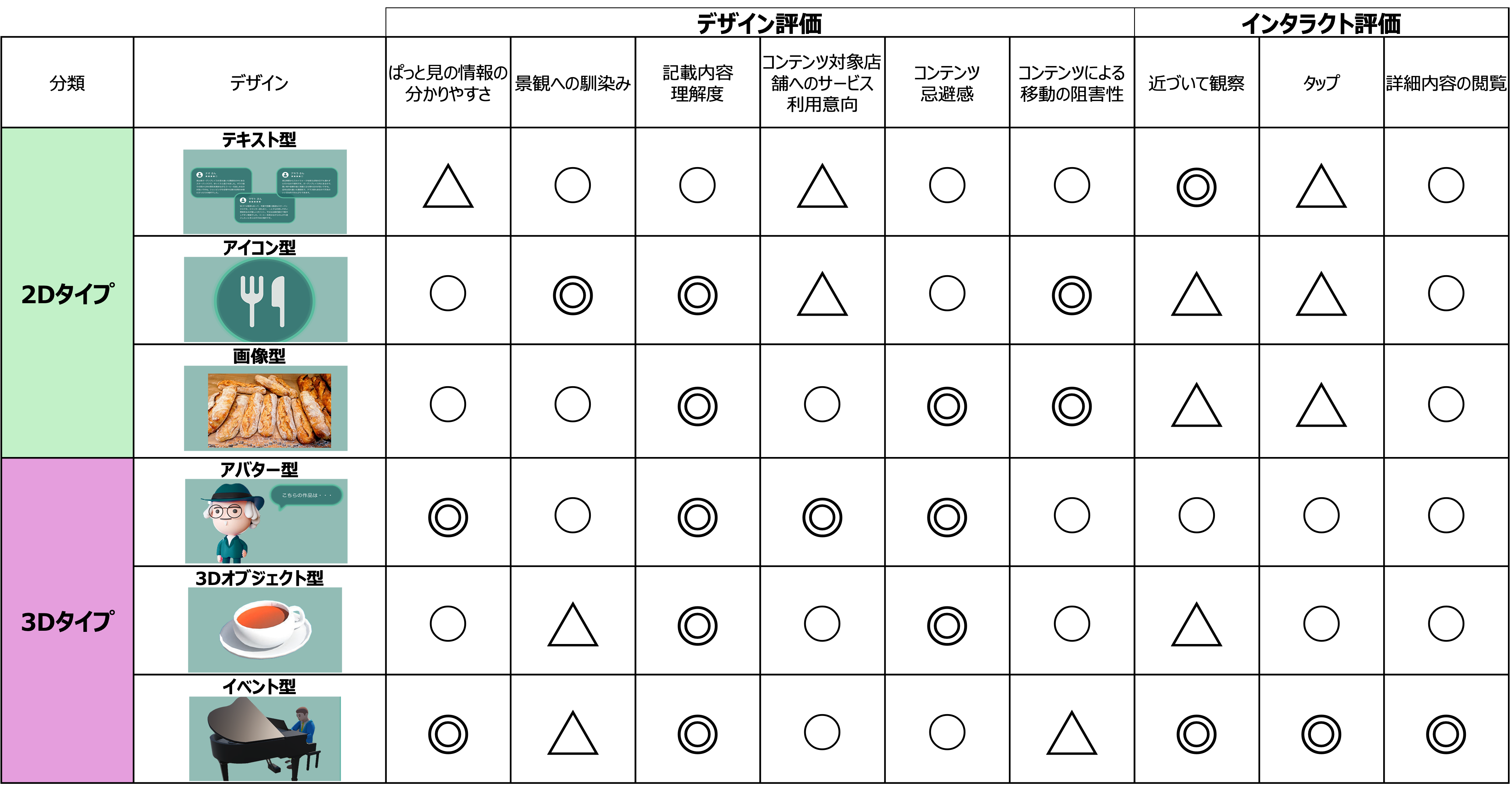- City & Transport
Motion Cyber Viewing
- Hakuhodo DY Holdings Inc.

About
We conducted a demonstration experiment on AR information display during walking in urban spaces, in collaboration with Hakuhodo DY Holdings Inc. (hereinafter referred to as Hakuhodo DY Holdings).
In this experiment, we defined the visual information display experience during walking as “Motion Cyber Viewing,” and built and tested hypotheses on how it could be utilized for marketing communication in future urban spaces where AR glasses are widespread.

Background
In recent years, major tech companies such as Apple and Meta have been accelerating their entry into the spatial computing domain, rapidly advancing the fusion of digital information and physical space. This technological evolution is expected to bring about significant changes in how people interact with information. In particular, the advancement of AR glasses enables users to access information without looking down, unlike with smartphones. As a result, the time spent “walking outdoors” could become a new opportunity for media engagement.
For example, AR navigation that guides users to their destinations, or AR content that displays recommendations for nearby shops and tourist spots, can provide people with the information they need in urban spaces at the right time, offering a more convenient and enjoyable city experience.
Based on prior research, we hypothesized that AR navigation and AR content in urban spaces influence users’ proactive information-seeking behavior. We focused on verifying how users, while walking with AR glasses and viewing AR navigation, actively engage with AR content encountered along the way. Furthermore, we tested two hypotheses regarding how the “amount of information” and “design” of AR navigation and AR content influence the promotion of proactive information engagement.
- Hypothesis 1: The presence and design of AR navigation affect users’ proactive engagement with AR content.
- Hypothesis 2: The amount of information and design of AR content affect users’ proactive engagement with AR content.

Execution
This experiment was conducted in the Ebisu area using the Apple Vision Pro, one of the most advanced HMDs with a per-eye resolution of 3660×3200 and a field of view of approximately 90 degrees. Targeting young participants with no prior experience visiting Ebisu, we simulated a sightseeing scenario and carried out AR experiences while walking through the urban space. To ensure safety, such as preventing falls and collisions, the experiment was conducted with a team of four staff members constantly supporting the participants during their walk.
In designing the AR experiences for this demonstration, special emphasis was placed on harmony with the urban landscape. We conducted a detailed analysis of elements such as the colors used in signage, and reflected these in the color schemes and tones of AR navigation and AR content. This design ensured that AR blended naturally into the real environment while still appearing engaging and attractive.
The verification targeted multiple AR navigation methods (map-based, line-based, light pillar-based, avatar-following) and a variety of AR content expressions placed along the route (text-based, icon-based, image-based, avatar-appearance, 3D object-based, interactive event-based), all developed with this design philosophy of blending into the urban landscape.
We evaluated the impact of these combinations on user experience from multiple perspectives: intuitive guidance (ease of understanding the route), environmental visibility (ease of perceiving surroundings), entertainment value (enjoyment of the experience), and safety (attention to accident prevention). In addition, we assessed content recognition rate and interaction rate. Particularly for AR content, we comprehensively examined aspects such as harmony with the urban landscape and the natural gaze-guiding effects, based on the aforementioned design approach.


Results
The results of the demonstration experiment revealed that AR navigation and AR content each play distinct roles in the urban experience, while also serving as complementary elements to one another.
▼[Results of Hypothesis 1]

When examining the impact of AR navigation—where destinations are constantly displayed during sightseeing—on the recognition and interaction rates of AR content placed along the route, we confirmed that AR navigation increased both recognition and interaction compared to checking a 2D map on hand each time. Among the navigation methods, the “line-based” AR navigation most effectively enhanced interaction with AR content. Interestingly, the “avatar-based navigation” was found to be more familiar and approachable, but at the same time, it could suppress users’ attention to their surroundings.
▼[Results of Hypothesis 2]

For AR content, the “avatar-based” type demonstrated well-balanced performance across aspects such as harmony with the landscape and interactivity. The “event-based” type attracted high attention, but also had a significant impact on the landscape, highlighting a trade-off between effect and disruption. Additionally, while “text-based” content was less likely to be tapped, it showed a unique effect of physically drawing users closer and encouraging them to read carefully.
From these findings, we conclude that AR is not merely a means of presenting information, but has the potential to serve as a foundation for urban experience design—linking people’s movement and stay, efficient guidance, and serendipitous discoveries.
Next Step
The evaluation of navigation design and content expression revealed in this study provides highly valuable insights for the future application of spatial computing in urban spaces. Beyond quantitative outcomes such as gaze guidance and interaction rates, it has become clear that we must also address qualitative aspects of the experience, including users’ sense of immersion and the pleasantness of walking through the city.
Furthermore, as AR glasses are expected to become commonly used in daily life in Japan in the future, even brief moments such as while walking could become new touchpoints for brands and municipalities to deliver information. However, if AR advertisements aimed at forced recognition were to dominate users’ field of vision during walking, this could not only raise safety concerns but also degrade the impression of the urban landscape.
Based on the findings of this study, Hakuhodo DY Holdings and MESON aim to contribute to society not merely by pursuing new business models for AR advertising, but by exploring information environment design that considers safety and comfort, while also being mindful of urban landscapes extended into virtual spaces.
Credit
- Service Planning, Design and Development
- Kiyoshi Nagaya, Gaku Shimizu, Akira Tsujikawa, Tsuyoshi Takano, Masahito Ando, Yuki Homma, Yuji Higashida, Norihiro Yamamoto
- Collaboration in Planning
- Hideto Hiranuma(Hakuhodo DY Holdings inc.), Shingo Meguro(Hakuhodo DY Holdings inc.)